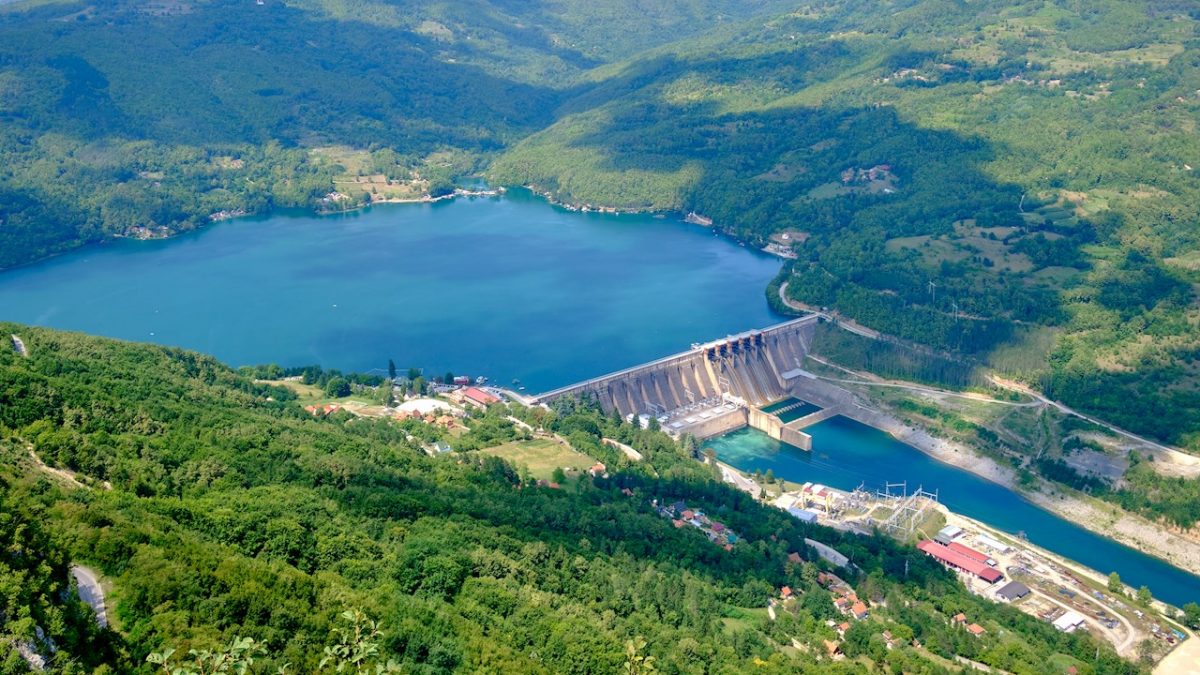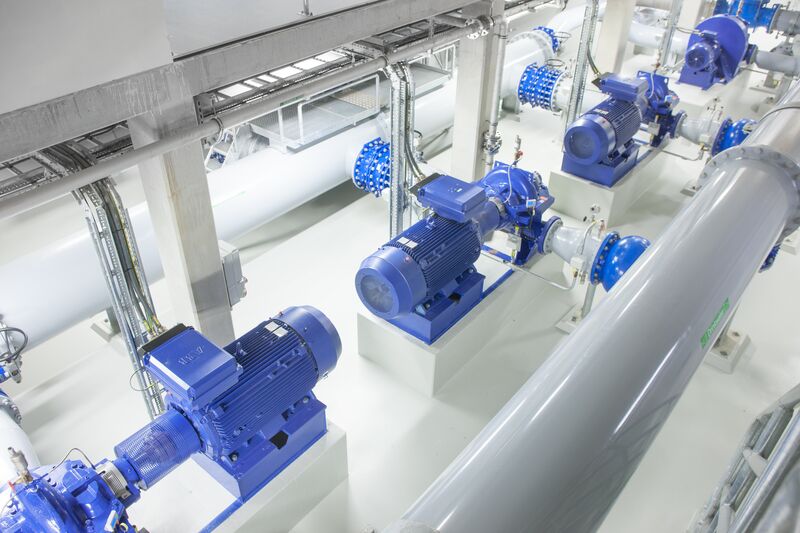In cooperation with the Swiss company ABB, Electric Power Industry of Serbia improves availability and increases overall energy efficiency of its Bajina Bašta Hydroelectric Power Plant
Renewable energy sources, the circular economy and the promotion of green technologies are important actors in the fight for a better future. Every now and then, we can hear how the improvement of energy efficiency helps achieve significant environmental and economic benefits.

As it implies optimal electricity consumption to achieve maximum savings, the implementation of energy efficiency measures is an area full of challenges requiring expertise and continuous improvement to reach the most advanced solutions. It is the main reason why ABB has launched a campaign called Energy Efficiency Movement which will last for at least 2 years, involving various activities. This campaign fully complies with the Ecodesign Regulation (EU 2019/1781), which entered into force in the European Union on 1 July 2021 and sets out new efficiency standards for electric motors.
Nearly 300 million electric motors drive today’s industry and if each of them were replaced by a highly efficient motor, global consumption would be reduced by about 10 percent.
“The very idea of the Energy Efficiency Movement campaign is to make people aware of the importance of energy efficiency and to liaise with governments, companies, and universities to achieve a common goal, that is to reduce the negative impact on the environment using advanced technologies in various industries,” says Milan Jevremović, Local Business Area Manager ABB Motion.
Not always in the focus of public attention, electromotors and the frequency converters that optimize their operation, are almost everywhere. They run many technological processes necessary for a modern way of living, ranging from industrial pumps, fans, production process conveyors, transport drive systems to the air conditioning, heating and ventilation systems in buildings and commercial facilities. Globally, electric motors consume close to 70 per cent of total electricity, so ABB saw this as an opportunity for most significant savings. Although still in use, many old motors were constructed according to outdated efficiency standards, thus causing the entire factory lines to operate at a lower level of efficiency than they are supposed to. It leads to increased costs during their operation.
“Near 300 million electric motors drive today’s industry, and if each of them got replaced by a highly efficient motor, global consumption would be reduced by about 10 per cent, which offers us, as a society, a great potential. In 2020, ABBˊs high-efficiency electrical motors and drives saved a total of 198 TWh worldwide,” Jevremović points out.
Renewable energy sources and reversible hydropower plants
Renewable energy sources such as solar and wind power plants contribute to the energy system and reduce CO2 emissions. However, the need for a stable electricity supply is constantly growing, particularly in periods of intensified demand. Therefore, it is necessary to have an adequate solution to compensate for the increased demand. Fortunately, there is a solution in the form of extremely important reversible hydropower plants (RHPP). Compared to hydropower plants, as we are already familiar with, RHPP can store surplus energy. They achieve this by pumping water into the reservoir (pump storage) using excess electricity, and if the need for increased production arises, the water from the reservoir is released back to run turbines to produce electricity.
As the Director of Electricity Generation at “Drinsko-Limske Hydro Power Plants”, the branch of PE Electric Power Industry of Serbia (EPS), Dušan Trišić explains that RHPP “Bajina Bašta” is a significant facility in the system of EPS which is used to compensate for daily peaks in consumption, as well as for seasonal production deficiencies in the system. Speaking about the specifications of RHPP “Bajina Basta”, Trišić explains that it consists of two hydro turbines of 300 MW each. The average annual production of RHPP is 620 GWh, with the highest annual production being 707 GWh, and the lowest 527 GWh. During the day, there are usually two start-ups of the hydro turbine, in the generator mode in the morning and afternoon peak, and during the night one pumping mode per hydro turbine. That means 30-60 start-ups in turbine mode and about 30 in pumping mode per hydro turbine monthly, says Trišić.
ABB’s significant advantage over other manufacturers is certainly its best list of references, with the presented references comparable in terms of both aggregate and SFP strength to RHE aggregates.

Static frequency converter (SFC) for maximum power savings
The idea for a static frequency converter was born while the construction of RHPP was in its initial phase, serving the purpose of starting the hydro turbine in motor mode when the power plant operates as a pumping plant. Over the past decades, HPP “Bajina Bašta”, as a part of PE Electric Power Industry of Serbia, always had a reliable partner in ABB. In addition to providing various types of equipment for these power plants over the years, ABB got involved in the early stages of SFC project and helped EPS to come up with optimal solutions to make RHPP “Bajina Bašta” an example of efficiency.
As Milan Jevremović explains, the installation of a static frequency converter helps RHPP “Bajina Bašta” to work more efficiently through several aspects. “One of them is the way of starting the turbine units, but more importantly, with this project we have enabled the hydropower plant to work more efficiently because its hydro turbines will no longer be engaged and switched off for starting-up the turbines in RHPP, thus enabling them to work continuously and produce more green energy. It will save about 5 GWh per year in production, allowing us to make production more efficient. Another, equally important aspect is that with the implementation of this solution, the operational and exploitation life of the hydro turbines, used as drive units during synchronous start-up in hydropower plant, will be extended by eight years, reducing the need for overhaul as well,” says Jevremović.
Radenko Vasić, Revitalization and Modernization Project Manager at “Drinsko-Limske Hydro Power Plants”, points out that the significant advantage of ABB over the other manufacturers is certainly in its reference list, whereby the presented references were comparable in terms of hydro turbine power and SFC power, with RHPP hydro turbines. Over the last few years, one of the important business goals of PE Electric Power Industry of Serbia, as the largest power supply company in Serbia, is the improvement of energy efficiency in their production facilities. Energy efficiency is being recognized as an obligation and as a great benefit for EPS because each megawatt of savings, whether expressed in money or in energy, is beneficial. For almost 60 years, HPP “Bajina Bašta” has cooperated successfully with ABB (formed by merging ASEA and BBC companies), which was also reflected in this project, both in terms of providing the necessary technical information in the pre-tender phase and the execution of contracts for the delivery of SFC equipment, explains Vasić.
ABB will continue to pursue energy goals in cooperation with governments and scientific institutions to promote the development of energy efficiency and contribute to a better living environment. “Through innovation, both products and solutions, by sharing knowledge and experience, we can optimize consumption, improve efficiency, and help to make industries, infrastructure and transportation more efficient, and our society more eco-conscious,” concludes Jevremović.
Maximize the energy production
ABB MEGADRIVE- LCI (~21MW) and transformers for the soft start of 2 x 300MW synchronous machines in the RHPP Bajina Bašta are helping to maximize the energy production by delivering additional 5-6 GWh per year through better efficiency and readiness of the hydro turbines.